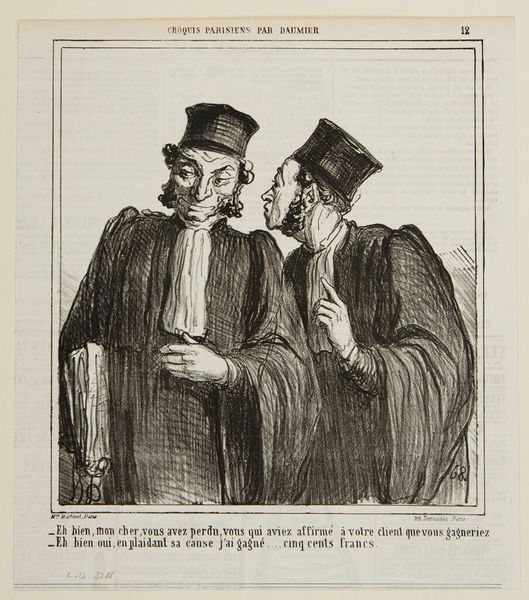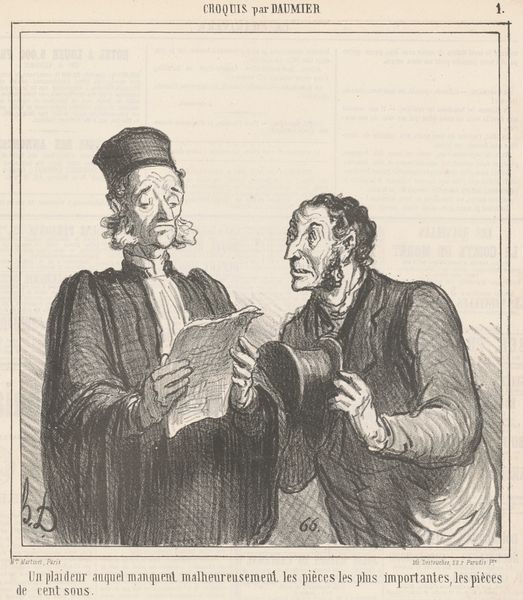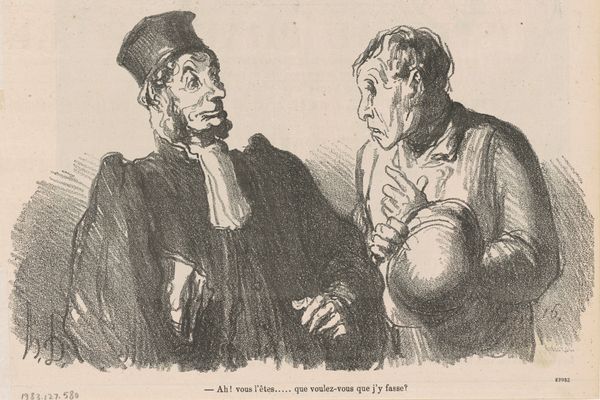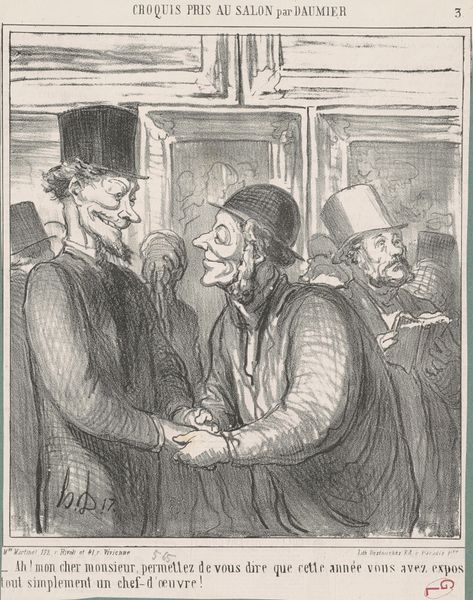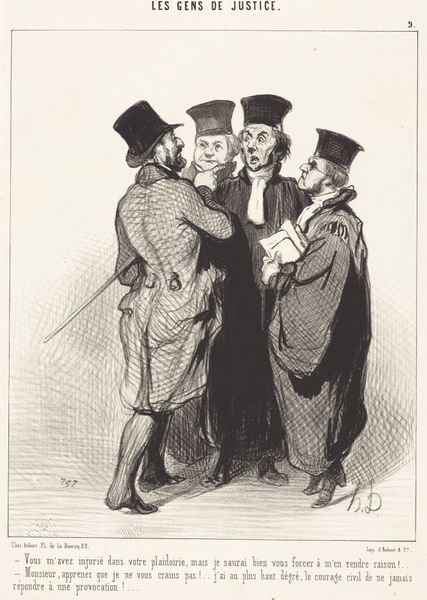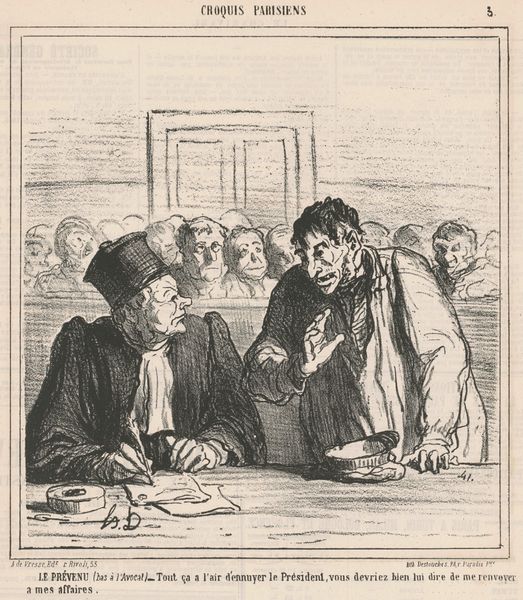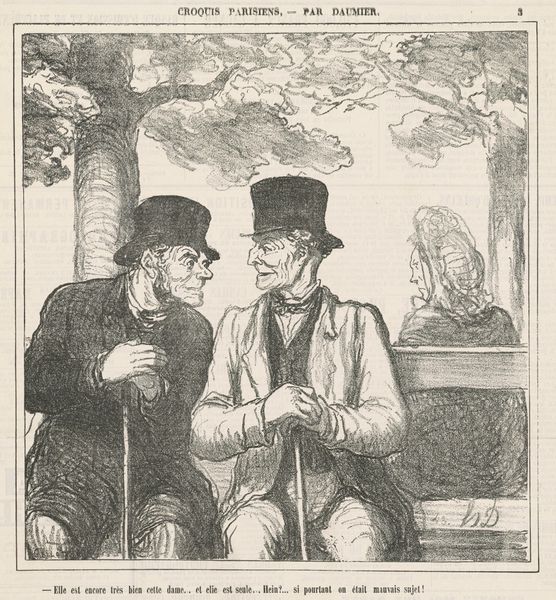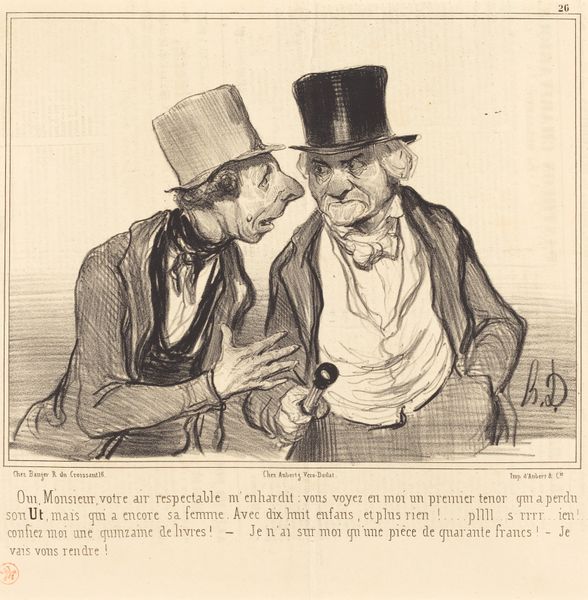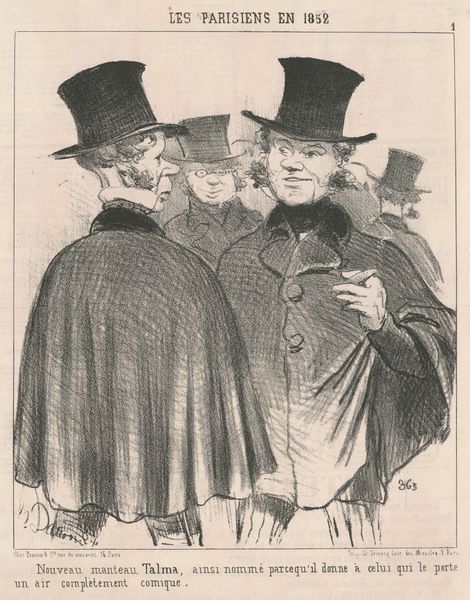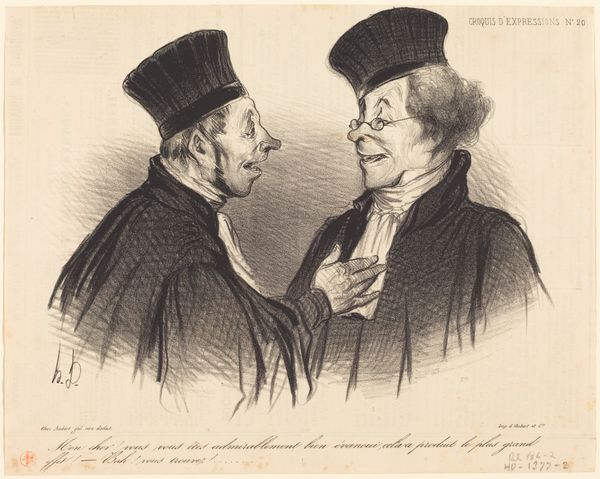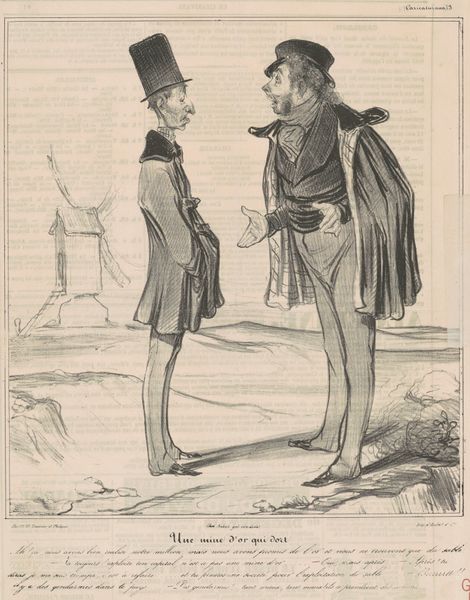
lithograph, print
#
lithograph
# print
#
caricature
#
genre-painting
Copyright: National Gallery of Art: CC0 1.0
This print by Honoré Daumier depicts two lawyers, and was likely made using lithography, a printmaking process that relies on the contrast between oily and water-based substances. The matrix in this case would have been a block of limestone, on which the image was drawn with a greasy crayon. The material qualities of lithography – the way it can capture fine lines and subtle gradations of tone – are clearly on display here. The image has a directness that speaks to its origin in drawing. You can see the marks of the artist's hand in the hatching that defines the figures' forms. Daumier’s choice of lithography was significant. As a relatively inexpensive and quick method of reproduction, it was ideally suited for producing satirical prints for mass consumption. Daumier used this technique to great effect, lampooning the foibles of the French bourgeoisie and the corruption of the legal system. The contrast in appearance between the two lawyers is a visual commentary on the social dynamics of 19th century France and the amount of work involved with the production of these prints. It reminds us of the power of accessible art to challenge social norms.
Comments
No comments
Be the first to comment and join the conversation on the ultimate creative platform.
